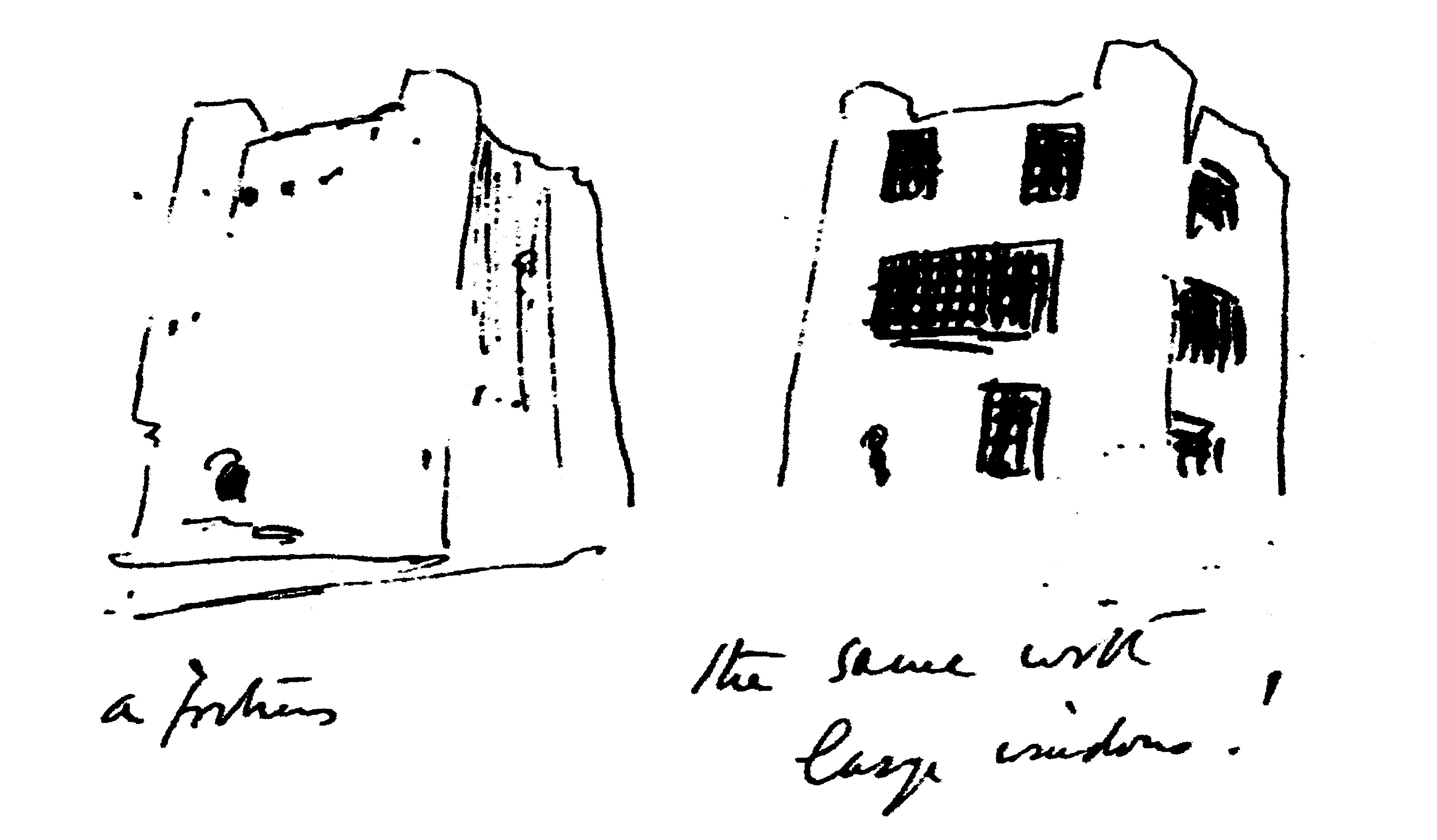Unusual Commissions: ‘A Fortress with Large Windows’
Jane Brown
Here is one of those tightly-knitted quiz questions: Who is the connection between the Rand Regiments Memorial, seen on the Trust’s South African tour last autumn [Winter 2009 newsletter], the sometime top-of-the-charts ‘Bad Penny Blues’, a former rectory in Kent [Autumn 2009 newsletter], and the above-mentioned ‘fortress’? Of course it is an in-question, but the answer is not Edwin Lutyens.
It is Alfred Lyttelton (1857-1913), the youngest of twelve siblings reared at Hagley in Worcestershire, whose sporting achievements made him a celebrity in almost the modern meaning of the word: worshipped at Eton, with a handful of Blues from Cambridge, he proceeded to score over 4,000 runs in 1st class cricket, to captain his country at both cricket and association football, and hold the amateur tennis championship for several years. He was not rich and had to work hard as a barrister until he was persuaded into politics in the 1890s, and sent to South Africa to organise reconstruction in the aftermath of the Boer War, where he made many friends and formed enduring cricketing connections. At that time Lyttelton and his wife, the former Edith Balfour, had asked Lutyens to build their house at Gullane on the Firth of Forth, adjacent to the Muirfield Links, as golf had succeeded the livelier games as his sporting passion. ‘Mrs. Lyttelton can’t have a fortress and large windows too’, wrote Lutyens to his Emily, sketching an incongruous castle with picture windows, but his ingenuity produced the house we know as Grey Walls, with its stout stone walls and dual shelter and prospect façades, which did seem to be both! It also set the architect thinking about castles for future reference: and it was likely that Lutyens’s name went down on the plan for official commissions in South Africa, hence the regimental memorial.
Humphrey ‘Humph’ Lyttelton (1921-2008), lamented jazz musician and maestro of the mysteries of ‘Mornington Crescent’, was Alfred Lyttelton’s great-nephew. Heredity is so unfashionable in these days of stand-alone celebrity that this was not much mentioned at ‘Humph’s’ death, but surely it was his gravitas as the scion of generations of soldierly and statesmanlike Lytteltons that made the double entendres so exceedingly funny? And his successful transition into the world of jazz an all the more remarkable achievement?
Alfred and Edith Lyttelton continued to be Lutyens’s staunch supporters: their division-bell house in Great College Street, which became two houses, and the old rectory at Wittersham – their family home after they sold Grey Walls – were the core of their benevolent influence, which included championship of Lutyens’s appointment at Hampstead Garden Suburb, and was filtered in uncountable ways through their vast circles of families and friends. Alfred Lyttelton’s untimely death, from complications after surgery for an old cricketing injury, was widely mourned: John Buchan wrote of him as ’of the tribe of the Sons of Consolation, always helping lame dogs over stiles, ever ready with advice and help, giving of his rich humanity to needy and shivering souls’. Oh, that sporting celebrities were still made in the Lyttelton mould.
Jane Brown



